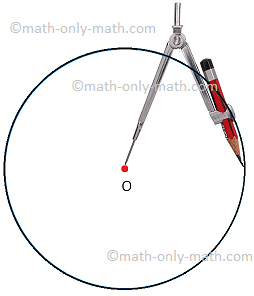Properties of Addition of Matrices
We will discuss about the properties of addition of matrices.
1. Commutative Law of Addition of Matrix: Matrix multiplication is commutative. This says that, if A and B are matrices of the same order such that A + B is defined then A + B = B + A.
Proof: Let A = [aij]m × n and B = [bij]m × n
Let A + B = C = [cij]m × n and B + A = D = [dij]m × n
Then, cij = aij + bij
= bij + aij , (by using the definition of addition of matrices)
= dij
Since C and D are of the same order and cij = dij then, C = D.
i.e., A + B = B + A. This completes the proof.
2. Associative Law of Addition of Matrix: Matrix addition is associative. This says that, if A, B and C are Three matrices of the same order such that the matrices B + C, A + (B + C), A + B, (A + B) + C are defined then A + (B + C) = (A + B) + C.
Proof: Let A = [aij]m × n ,B = [bij]m × n and C = [cij]m × n
Let B + C = D = [dij]m × n , A + B = E = [eij]m × n , A + D = P = [pij]m × n , E + C = Q = [qij]m × n
Then, dij = bij + cij , eij = aij + bij , pij = aij + dij and qij = eij + cij
Now, A + (B + C) = A + D = P = [pij]m × n
and (A + B) + C = E + C = Q = [qij]m × n
Therefore, P and Q are the matrices of the same order and
pij = aij + dij = aij + (bij + cij)
= (aij + bij) + cij , (by the definition of addition of matrices)
= eij + cij
= qij
Since P and Q are of the same order and pij = qij then, P = Q.
i.e., A + (B + C) = (A + B) + C. This completes the proof.
3. Existence of Additive Identity of Matrix: Let A be the matrix then, A + O = A = O + A
Therefore, ‘O’ is the null matrix of the same order as the matrix A
Proof: Let A = [aij]m × n and O = [0]m × n
Therefore, A + O = [aij] + [0]
= [aij + 0]
= [aij]
= A
Again, O + A = [0] + [aij]
= [0 + aij]
= [aij]
= A
Note: The null matrix is called the additive identity for the matrices.
4. Existence of Additive Inverse of Matrix: Let A be the matrix then, A + (- A) = O = (- A) + A
Proof: Let A = [aij]m × n
Therefore, - A = [- aij]m × n
Now, A + (- A) = [aij] + [- aij]
= [aij + (- aij)]
= [0]
= O
Again (- A) + A = [- aij] + [aij]
= [(-aij) + aij]
= [0]
= O
Therefore, A + (- A) = O = (- A) + A
Note: The matrix – A is called the additive inverse of the matrix A.
From Properties of Addition of Matrices to HOME
Didn't find what you were looking for? Or want to know more information about Math Only Math. Use this Google Search to find what you need.
Recent Articles
-
Dividing 3-Digit by 1-Digit Number | Long Division |Worksheet Answer
Apr 24, 24 03:46 PM
Dividing 3-Digit by 1-Digit Numbers are discussed here step-by-step. How to divide 3-digit numbers by single-digit numbers? Let us follow the examples to learn to divide 3-digit number by one-digit nu… -
Symmetrical Shapes | One, Two, Three, Four & Many-line Symmetry
Apr 24, 24 03:45 PM
Symmetrical shapes are discussed here in this topic. Any object or shape which can be cut in two equal halves in such a way that both the parts are exactly the same is called symmetrical. The line whi… -
Mental Math on Geometrical Shapes | Geometry Worksheets| Answer
Apr 24, 24 03:35 PM
In mental math on geometrical shapes we will solve different type of problems on simple closed curves, polygons, basic geometrical concepts, perpendicular lines, parallel lines, circle, terms relates… -
Circle Math | Terms Related to the Circle | Symbol of Circle O | Math
Apr 24, 24 02:57 PM
In circle math the terms related to the circle are discussed here. A circle is such a closed curve whose every point is equidistant from a fixed point called its centre. The symbol of circle is O. We… -
Fundamental Geometrical Concepts | Point | Line | Properties of Lines
Apr 24, 24 12:38 PM
The fundamental geometrical concepts depend on three basic concepts — point, line and plane. The terms cannot be precisely defined. However, the meanings of these terms are explained through examples.




